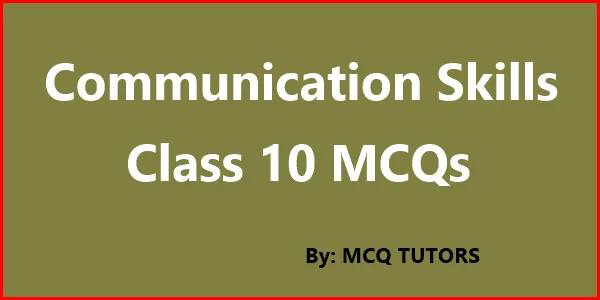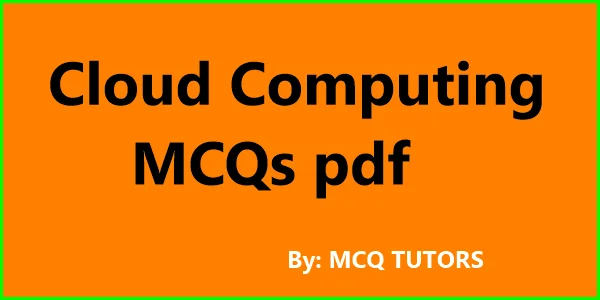Advanced Operating System MCQs with Answers Are you a student or professional looking to brush up your skills in Advanced Operating Systems? Are you searching for multiple choice questions (MCQs) to test your understanding of advanced operating systems?
If so, this article is exactly what you need! Here, we have compiled a comprehensive list of MCQs on Advanced Operating Systems along with the answers. All the questions cover the concepts and components of an advanced operating system.

50 Advanced Operating Systems (Distributed Operating System) MCQs with Answers
1) The early ARPAnet is an example of a distributed computing system based on the ___.
a) minicomputer model
b) Workstation model
c) Hybrid model
d) Processor – pool model
Ans. a
2) In ___, if a processor writes the value 100 to the memory location x, this write operation will only change the contents of its local memory and will not affect the contents of the memory of any other processor.
a) tightly coupled systems,
b) loosely coupled systems
c) parallel processing systems
d) File management system
Ans. b
3) Identify the distributed computing model from the following statement.
In this model, the user’s processes need not be migrated to the server machines for getting the work done by those machines.
a) minicomputer model
b) Workstation model
c) Workstation-Server model
d) Processor – pool model
Ans. c
4) The name services of DCE include ___
a) the Cell Directory Service
b) the Global Directory Service
c) the Global Directory Agent
d) a,b and c
Ans. d
5) IPC stands for ___
a) Integrated parallel communication
b) Intermediate process call
c) Internal program call
d) Inter process communication
Ans. d
6) In the case of ___, message remains in the sender’s address space until the receiver executes the corresponding receive.
a) no buffering
b) single message buffering
c) Unbounded-capacity buffer
d) Finite bound buffer
Ans. a
7) Which buffering strategy is used for implementing synchronous communication?
a) Single message buffer
b) Unbounded – Capacity buffer
c) Finite-Bound Buffer
d) All can be used.
Ans. a
8) What do you mean by 0-reliable level in multicast communication?
a) Multiple responses is expected from any receivers.
b) No response is expected from any receivers.
c) Multiple responses is expected from multiple receivers.
d) A multicast message is received by all the members of the group or none.
Ans. b
9) Identify the server:
This type of server generally remains in existence indefinitely. It is shared by many clients. Servers of this type are created and installed before the clients use them.
a) Instance-per-call-servers
b) Persistent Servers
c) Non-Persistent Servers
d) Semantic server
Ans. b
10) The ___ unpacks the call receipt messages from local RPC Runtime and makes a perfect local call to invoke the appropriate procedure in the server.
a) server Stub
b) server
c) client
d) client stub
Ans. a
11) Transparent RPC mechanism refers to :
a) Existance of multuple computer visible and a provide a single system image to its users.
b) It runs the program transparently.
c) It is a technique to shift the program to other computer.
d) It is technique in which local procedures and remote procedures are indistinguishable to programmers.
Ans. d
12) IDL stands for ___
a) Integrated Data library
b) Isolated Data Library
c) Interface Data Language
d) Interface Definition Language
Ans. d
13) In ___ model, when a process does a release access, the contents of all the modifications are not immediately sent to other nodes but they are sent only on demand.
a) Release Consistency Model
b) Lazy Release consistency model
c) Weak Consistency Model
d) Processor Consistency Model
Ans. b
14) DSM stands for ___
a) Direct shared memory
b) Direct system memory
c) Distributed shared memory
d) Distributed system memory
Ans. c
15) Having data belonging to two independent processes in the same page is called ___.
a) buffering
b) blocking
c) message-passing
d) false sharing
Ans. d
16) ___ refers to the block size of the DSM system, i.e. to the units of sharing and the unit of data transfer across the network when a network block fault occurs.
a) Granularity
b) Coherence
c) Abstraction
d) Synchronization
Ans. a
17) Most accurate global time is based on oscillations of the ___
a) Cesium-130 atom
b) Cesium-133 atom
c) Cesium-136 atom
d) Cesium-139 atom
Ans. b
18) The Network Time Protocol is similar to _algorithm in that synchronization is also performed using time servers and an attempt is made to correct for communication latencies.
a) Banker’s
b) Divide and conquer’s
c) Cristian’s
d) Xdelta’s
Ans. c
19) Two clocks are said to be synchronized at a particular instance of time if the difference in time values of the two clocks is less than some specified constant. The difference in time values of two clocks is called ___.
a) Interrupt
b) Clock Frequency
c) Clock Ticks
d) Clock Skew
Ans. d
20) In ___ each node periodically sends a message to the time server.
a) Passive Time Server Centralized Algorithm
b) Active Time Server Centralized Algorithm
c) Global Averaging Distributed Algorithms
d) Localized Averaging Distributed Algorithms
Ans. a
21) Load balancing algorithms in ___ class use the processor and process characteristics to allocate processes to nodes.
a) static
b) dynamic
c) deterministic
d) probabilistic
Ans. c
22) A process is already split into pieces, called ___.
a) tasks
b) program
c) processors
d) routines
Ans. a
23) In ___ location policies a random node is polled to check its state and the task is transferred if it will not be overloaded; polling is continued until a suitable node is found.
a) threshold
b) shortest
c) bidding
d) pairing
Ans. a
24) The algorithm should be scalable i.e. ___.
a) the system should not enter a state in which nodes spend all their time migrating processes or exchanging control messages without doing any useful work.
b) the system should be able to handle small and large networked systems.
c) the algorithm should not be affected by the crash of one or more nodes in the system.
d) the process assignment decisions should be based on the current load of the system and not on some fixed static policy.
Ans. b
25) A process is ___
a) a program in Execution.
b) an asynchronous activity.
c) the ‘dispatchable’ unit.
d) All a,b,c
Ans. d
26) In case of good process migration mechanism, ___ means failure of any node other than the one on which the process is running should not affect the execution of the process.
a) robustness
b) efficiency
c) transparent
d) interference
Ans. a
27) Process migration involves ___
a) selection of a process to be migrated
b) selection of destination system or node
c) actual transfer of the selected process to the destination system or node
d) all a,b,c
Ans. d
28) ___ typically contains temporary data such as subroutine parameter, return address, and temporary variables.
a) Current value of Program Counter
b) Value of the variables
c) The process stack
d) A data section
Ans. c
29) In case of ___ transparency a file can transparently move to another server.
a) location
b) migration
c) replication
d) concurrency
Ans. b
30) ___, as a feature of good distributed file system, clients should be able to continue working if a file server crashes. Likewise, data must not be lost and a restarted file server must be able to recover to a valid state.
a) Scalability
b) Reliability
c) Flexibility
d) Fault tolerance
Ans. d
31) In the case of , changes to an open file are only locally visible.
a) session semantics
b) immutable files
c) atomic transactions
d) None of the above.
Ans. a
32) In case of ___ the server automatically copies files to other servers after the files are written.
a) explicit replication
b) implicit replication
c) lazy file replication
d) group file replication
Ans. c
33) A in a distributed system is a string of bits or characters that is used to refer to an entity.
a) name
b) attribute
c) identifiers
d) addresses
Ans. a
34) ___ manage the name spaces and binds an object to its location.
a) Name Server
b) Name agent
c) Context
d) Name resolution
Ans. a
35) Find out the characteristics of System-oriented names:
a) They are large integers or bit strings.
b) They are of the same size
c) Generally shorter than human-oriented names and are easy for manipulations like hashing, sorting and so on.
d) All a,b,c
Ans. d
36) Object’s location is found by ___
a) Broadcasting
b) Encoding Location of objects within UID
c) Searching creator node first and then broadcasting
d) All a,b,c
Ans. d
37) An unauthorized party inserts counterfeit objects into the system is called ___
a) interruption
b) interception
c) fabrication
d) modification
Ans. c
38) Wiretapping to capture data in a network is an example of ___
a) interruption
b) interception
c) fabrication
d) modification
Ans. b
39) In case of modification an unauthorized party not only gains access to but tampers with an asset. This is an attack on.
a) availability
b) confidentiality
c) integrity
d) authenticity
Ans. c
40) The ___ are based on modification of the original message in some manner, or on creation of a false message.
a) Passive attack
b) Release of message content attack
c) Traffic analysis attack
d) Active attack
Ans. d
41. ___ transparency deals with masking from the users’ partial failures in the system where_ transparency means that users should not need or be able to recognize whether a resource (hardware or software) is remote or local.
a) Location, Failure
b) Access, Location
c) Access, Failure
d) Failure, Access
Ans. d
42. State whether the following statements are true / false:
1) Name transparency refers to the fact that no matter which machine a user is logged onto.
2) The aim of migration transparency is to ensure that the movement of the object is handled automatically by the system in a user-transparent manner.
a) 1.True, 2.True
b) 1. True, 2. False
c) 1.False, 2. True
d) 1. False, 2. False
Ans. c
43. Find out the important issues to be considered for the design of an IPC protocol based message passing system from the following list:
1) Acknowledgement by the sender
2) Handling system crashes or link failures
3) Handling of buffers
4) Structural Information
a) 1,2,3
b) 2,3,4
c) 1,3,4
d) 1,2,3,4
Ans. a
44. What do you mean by blocking semantics of communication primitives?
a) A communication primitive is said to have blocking semantics if its invocation does not block the execution of its invoker.
b) A communication primitive is said to have blocking semantics if its invocation blocks the execution of its invoker.
c) A communication primitive is said to have blocking semantics if a a test primitive is used by the receiver to check the buffer status.
d) A communication primitive is said to have blocking semantics when a timeout value is used with a blocking receive primitive to prevent a receiving process from getting blocked indefinitely if the sender has failed.
Ans. b
45. Choose the correct sequence for the following case:
The RPC model is used for transfer of control and data within a program in the following sequence:
1) The procedure body is executed in a newly created execution environment that includes copies of the arguments given in the calling instruction.
2) For making a procedure call, the caller places arguments to the procedure in some well-specified location.
3) After the procedure’s execution is over, control returns to the calling point, possibly returning a result.
4) Control is then transferred to the sequence of instructions that constitutes the body of the procedure.
a) 1–> 2–> 3–> 4
b) 2–> 4–>1–>3
c) 2–> 4–> 3–> 1
d) 2–> 1–> 3–> 4
Ans. b
46. State whether the following statements are true/false:
1) RPCs consume less time (100 to 1000 times) than local procedure calls.
2) Remote procedure calls are more vulnerable to failure than local procedure calls.
a) 1.True, 2.True
b) 1. True, 2. False
c) 1.False, 2. True
d) 1. False, 2. False
Ans. c
47. Fill in the blanks:
1) Under replication and migration strategies for DSM design, only one copy of each block of the shared memory is in the system and its location is fixed.
2) Under ___ strategy blocks are replicated, and blocks do not migrate to other nodes.
a) Non-replicated, non-migrating blocks, 2) Non-replicated, migrating blocks
b) Non-replicated, migrating blocks, 2) Replicated, migrating blocks
c) Replicated, migrating blocks, 2) Replicated, non-migrating blocks
d) Non-replicated, non-migrating blocks, 2) Replicated, non-migrating blocks
Ans. d
48. State whether the following statements are true or false:
1) A major disadvantage of non-replication strategies is lack of parallelism because only the processes on one node cannot access data contained in any given block at any given time.
2) In case of Write-Invalidate Protocol, all copies of a data block except one are invalidated before a write can be performed on it.
a) 1.True, 2.True b) 1. True, 2. False
c) 1.False, 2. True d) 1. False, 2. False
Ans. c
49. Find out the goals of a good task assignment algorithm.
a) Minimize IPC cost
b) Efficient resource utilization
c) Quick turnaround time
d) A low degree of parallelism
Ans. a
50. ___ approach of object locating mechanism is very efficient if high degree of locality is exhibited in locating objects from a node and it is flexible since it can support object migration.
a) Broadcasting
b) Searching creator node first and then broadcasting
c) Using forward location pointers
d) Using hint cache and broad
Update recently ⇒ Linux Operating System MCQ pdf
Conclusion Points
Advanced Operating Systems MCQs are a great way to test your knowledge and sharpen your skills. With the right preparation and dedication, you can ace this exam and prove that you have mastered the concepts.
Be sure to review the material thoroughly and take practice tests so you are comfortable with all of the topics covered.
Finally, don’t forget to take plenty of breaks in between study sessions so that you retain more information.
- You may like the read
- Logic Design MCQs
- Advanced Web Programming MCQs
- Advanced Computer Architecture Mcqs



